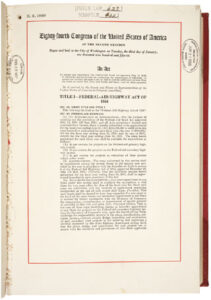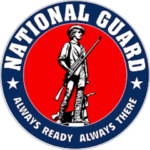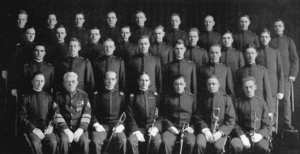 Many people think of the National Guard as a way to avoid going to war. They think that the Guard is designed to be a type of civil service group, but the reality is that they are a military, or actually a militia group. Never has that fact come to light more than now. The National Guard is considered a part of the reserve components of the United States Army and the United States Air Force. The difference between the regular military forces and the National Guard is that the National Guard usually serves in the United States, and not in wars abroad. Still, the president of the United States can “federalize” the National Guard for military action abroad. Reserve forces, including the guard, have made up about 45 percent of the personnel deployed to fight in Iraq and Afghanistan since 2001. While the deployment in Iraq and Afghanistan is currently the case, it is not normal procedure.
Many people think of the National Guard as a way to avoid going to war. They think that the Guard is designed to be a type of civil service group, but the reality is that they are a military, or actually a militia group. Never has that fact come to light more than now. The National Guard is considered a part of the reserve components of the United States Army and the United States Air Force. The difference between the regular military forces and the National Guard is that the National Guard usually serves in the United States, and not in wars abroad. Still, the president of the United States can “federalize” the National Guard for military action abroad. Reserve forces, including the guard, have made up about 45 percent of the personnel deployed to fight in Iraq and Afghanistan since 2001. While the deployment in Iraq and Afghanistan is currently the case, it is not normal procedure.
“The National Guard is a military reserve force composed of military members or units from each state and the territories of Guam, the Virgin Islands, Puerto Rico, and the District of Columbia, for a total of 54 separate organizations. All members of the National Guard of the United States are also members of the organized militia of the United States as defined by 10 U.S.C. § 246. Unlike the other parts of the military, these units are under the dual control of the state governments and the federal government, and can be deployed in disasters like hurricanes, tornados, floods, and even in situations of civil unrest and terrorist attacks.”
The National Guard was strictly a state-run militia before June 3, 1916, at which time, President Woodrow Wilson signed into law the National Defense Act, which expanded the size and scope of the National Guard. Prior to the National Defense Act, the National Guard was used for the needs of each state only. I never really thought about a state-run militia before, but the network of states’ militias that had been developing steadily  since colonial times, was now given the guaranteed status as the nation’s permanent reserve force. In times of the draft, the National Guard didn’t really get deployed. There were always enough soldiers available. It would most likely have to be a long-drawn-out war with many casualties before the National Guard was called out…as in Iraq and Afghanistan.
since colonial times, was now given the guaranteed status as the nation’s permanent reserve force. In times of the draft, the National Guard didn’t really get deployed. There were always enough soldiers available. It would most likely have to be a long-drawn-out war with many casualties before the National Guard was called out…as in Iraq and Afghanistan.
Theodore Roosevelt and other Republicans felt that the United States needed to get into World War I, in the first half of 1916, but with forces from the regular US Army, as well as the National Guard called out to face Mexican rebel leader Pancho Villa during his raids on states in the American Southwest, the need to reinforce the nation’s armed forces and increase US military preparedness became very apparent. The National Defense Act, ratified by Congress in May 1916 and signed by Wilson on June 3, brought the states’ militias more under federal control and gave the president authority, in case of war or national emergency, to mobilize the National Guard for the duration of the emergency. A logical use of the National Guard would have been during the riots seen in our country in 2019. The problem was that each state had to ask for help and some just didn’t.
One provision of the National Defense Act was that the term National Guard was to be used to refer to the combined network of states’ militias that became the primary reserve force for the US Army. The term had first been adopted by New York’s militia in the years before the Civil War in honor of the Marquis de Lafayette, a French hero of the American Revolution who commanded the “Garde Nationale” during the early days of the French Revolution in 1789. I guess they liked the name and felt like it accurately depicted the purpose of this  military force. Certain qualifications were also set in the National Defense Act. National Guard officers were allowed to attend Army schools. Also, all National Guard units would now be organized according to the standards of regular Army units. For the first time, National Guardsmen would receive payment from the federal government not only for their annual training…which was increased from 5 to 15 days, but also for their drills, which were also increased, from 24 per year to 48. Finally, the National Defense Act formally established the Reserve Officer Training Corps (ROTC) to train high school and college students for Army service.
military force. Certain qualifications were also set in the National Defense Act. National Guard officers were allowed to attend Army schools. Also, all National Guard units would now be organized according to the standards of regular Army units. For the first time, National Guardsmen would receive payment from the federal government not only for their annual training…which was increased from 5 to 15 days, but also for their drills, which were also increased, from 24 per year to 48. Finally, the National Defense Act formally established the Reserve Officer Training Corps (ROTC) to train high school and college students for Army service.


Leave a Reply